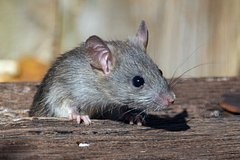The mechanism of hearing restoration in mammals is revealed

Scientists from the Del Monte Neuroscience Institute at the University of Rochester have identified a mechanism for the restoration of hearing in mammals. In the future, this discovery may form the basis of new methods for stimulating the growth of ear hair cells in humans. The results of the work are described in the journal Frontiers in Cellular Neuroscience.
Hair cells are receptor cells that are found on a membrane in the cochlea of the inner ear. Due to the bending of the hairs, when exposed to sound, mechanical vibrations are converted into electrical impulses that are transmitted to the brain. If the noise is too loud (in a stadium, construction site, or at a concert), the hairs can bend too much, resulting in hair damage and long-term hearing loss, the most common cause of hearing loss.
Related materials:Nothing to breathe. How oxygen affects the aggressiveness of cancerous tumorsPrevious work by researchers has shown that expression of the active growth gene ERBB2 is able to activate the growth of new hair cells in mammals, but why this is happening has not been clarified. Now the exact mechanism of this phenomenon has been studied.
For this, single-cell RNA sequencing in mice was used, and then the authors compared cells with the ERBB2 gene with similar cells that did not have it. They found that the growth gene stimulates the development of stem cells, leading to the expression of various proteins, including SPP1, which is required for signaling via the CD44 receptor. It is known that the CD44 receptor is located in the cells of the cochlea. Thus, cell division increased - the main stage of regeneration. In the future, it is planned to continue studying the mechanics of this phenomenon.

















